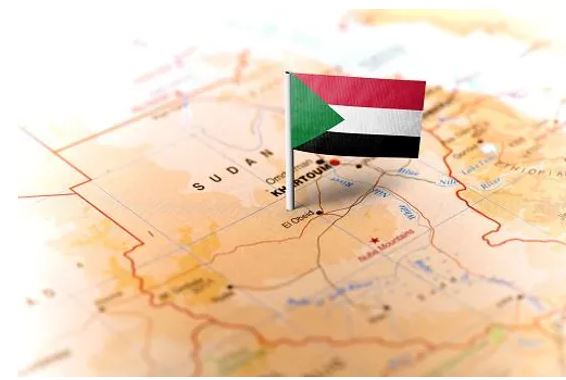A Tour of the Kordofan Countryside Heritage (2)
14 March, 2017
KHARTOUM (Sudanow.info.sd)—Dr. Doleeb Mahmoud Doleeb Abu Dagul, the writer and researcher of the Kordofan heritage in the University of Kordofan and chairman of the Heritage Society of Kordofan, continued in highlighting main features of Kordofan heritge:
The Baggara (cattle breeders):
The Baggara are found in southwest Kordofan and they consist of also nomadic Arab tribes of several clans, neighboring each other and inter-marriage relations. They include the Missairiya and Rizaigat They make two journeys a year in pursuit of the pasture and water, one from the north to the south (called Sayyar) during the dry season in the north, and another from the south to the north (known as the Nushooq) during the wet season in the north. They sometimes move from the south to the north fleeing the tsetse fly.
Members of each family divide the duties in preparation for the journey. The young men prepare the cattle, the baggage and all other necessities for the trip, the adults prepare the other necessities of food and drinks while the women and young girls weave the hair that is sheared from sheep and the hodaj (a chair put on a camel or ox to carry women) decoration made of ostrich feather, cowries and cloves, prepare food and take care of the family affairs.
“During the Sayyar journey, the convoy moves southwards and stops at springs and other water-gathering places in Hamer, Nuhud, Foola, Idaya and Abu Zabad and therefrom to Bahr al-Arab and Bahr al-Ghazal regions and to the South Sudanese Dinka Tribe with whom the Baggara Tribe maintains intimate social and cultural ties based on good neighborhood, integration, tolerance and peaceful coexistence.
“The two tribes are neighbors in the pasture and water and share customs and traditions and each one understands the language of the other and they also share territories like Abyei which lies under an administrative administration ruled by one package of laws under which there is no difference between an Arab and a Dinka in schools and in the markets.
“The Arab Baggara Tribe afterwards starts the long home-bound the Nushooq journey from the south to the north where the clouds cover the sky and the heavy rains pour and they settle down in Foola, Babanousa and Muglad and therefrom to North and South Kordofan where they share pasture and water with the sheep-breeders.
“The Nushooq journey takes the Baggara to Dilling, Dibaibat, Leery, Abu Karsholah, Abu Jibaiha, Rahad and the areas surrounding El-Obeid. They go to those cities and towns to purchase sugar, tea, clothes, soap and other needs from their markets.
“The Baggara Tribe maintains special ties with the Hamer, Bidairiyya, Shiwaihat, Kababeesh, Kawahla and Shanabla tribes although the latter are mostly sheep-breeders while the Baggara are cattle breeders and the major cattle markets are in the cities and towns of those tribes (El-Obeid, Nuhud, Idaya and Ghibaish) due to the importance of the cattle herds in boosting the national economy and the exports.
During the Nushooq and Sayyar journeys one enjoys the natural beautiful, captivating scenery and the attractive birds on the green, dense trees of Tabaldy, hummaid, aradaib, etc., and the geese swimming and playing in the pools. All this beauty is encompassed in a sunless, cloudy autumn climate with the pretty girls on ox-back heading towards the Kordofan pastures. This atmosphere is described by Dr. Doleeb in a magnificent poem in which he described his beloved girl on ox-back in fine words of affection and flirtation, with her long smooth hair and likening her to the rose of the pasture.
“Poets contest against each other with descriptive poetry on beauty, charming natural scenery and rich greenery where cattle herds graze while the hakkamat (woman singers) sign to the rhythmic beats of the nuggarah and shatam (a big drum and a smaller one).
“The hakkamat play a significant role in the community and a man may be expelled if one of them brands him of cowardliness which is a great stigma.
There is not much difference between the customs and traditions of the Baggara Tribe and those of the other tribes. The marriage, for instance, starts with the proposal and seeking opinion of the relatives and then (like the Dinka) a certain number of cattle herds is offered to the family of the prospective bride. The boys and girls dance together to the rhythmic beat of the nuggara which is placed in the center of the circle. The dancers strongly beat the ground in concert with rhythm which appears similar to the sound of the ox. This is because they rely in their life on the ox for their nomadic movements during which they sing songs of a four-fold rhythm that matches with the jogging of the ox.
On the wedding party day, particularly on the henna day, the colleagues and friends offer contributions to both the bride and bridegroom. The bride is usually selected from the related family, like the daughter of an uncle or an aunt in conformity to the proverb which means “cover your dish”. After the wedding party, the bride is taken to the house of her husband whose mother prepares the palm-leaf mats, buckets of millet and sorghum in addition of oil, kerkar (local perfumery) and a variety of other perfumes. The mother decorates the room of the bride and bridegroom with curtains ornamented with cowries, ostrich feather and copper. The bride is moved from her home to that of the bridegroom in a parade, known as ‘sairah’ or march during which certain song praising the beauty of the bride are sung.
One of the customs of the Baggara Tribe is the beating of the nuggara which is a drum locally made from cattle leather and is drummed on occasions and in moony nights. Each branch of the family has its own rhythm which it beats when the people get together at the residence of Nazir or sheikh of the tribe. The nuggara is also used on the Nushooq and Sayyar journeys and on death and hunting. The Baggara were famous for hunting elephants for the ivory before the international ban on ivory sales. The elephant hunters move on horseback in groups armed with spears or shulkaya which is a forked spear; and upon seeing an elephant, they make a circle around the animal and attack it from all directions, stabbing it with their spears until it falls to the ground. On the return, they are met with the hakkamat with trilling cries of joy and songs praising the heroes who have brought the elephant for their bravery and skillfulness.
The Baggara tribe is divided into several clans, including the Baggara Humur, Zurug, Ajaiza, Falatya and Ta’aysha but their customs and tradition are nearly similar. Among their former renowned chieftains who took part in the Mahdist Revolution were Khalifa Abdullahi al-Ta’ayshi, nicknamed Toor Shain (or frightening ox) and Al- al-Jaly while their current chieftains include Babo Nimir, Madibbu, Hiraika and others.
“Due to the importance of the cattle milk, a plant was established in Babanousah for drying milk; but the purpose of this plant could not be reached because it could operate only during the wet season and it was difficult to collect milk from remote places where the cattle herds were kept and there were no asphalted roads. For these reasons the milk drying factory could not operate and was substituted with one for canning karkade which was ultimately shut down” Doleeb said.
E N D
MAS/AS











